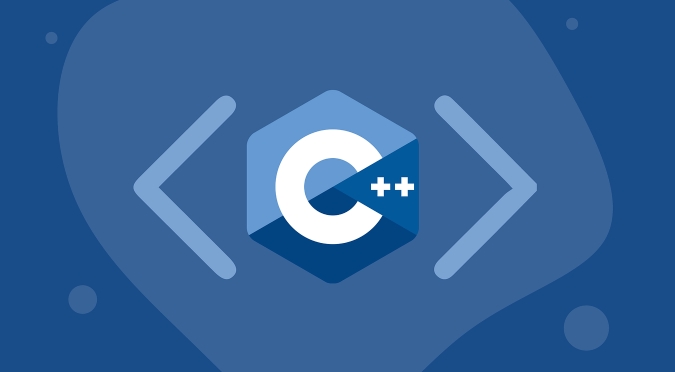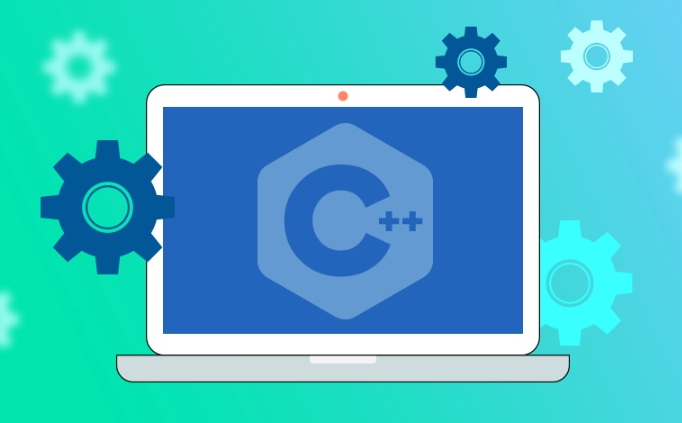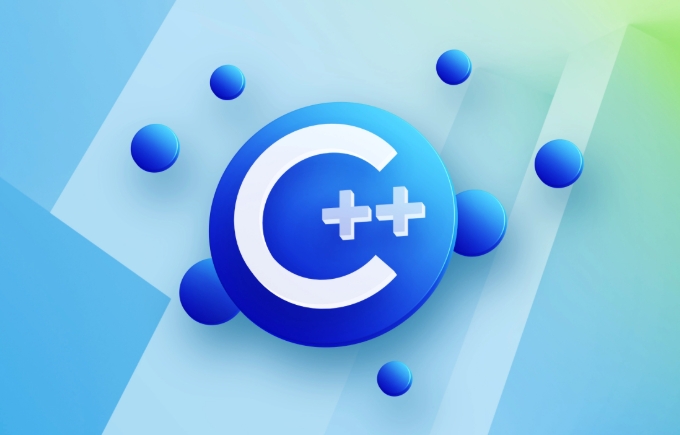The inline function is a function used in C to suggest that the compiler expand inline to reduce call overhead; 1. It improves efficiency by inserting the function body directly into the call, and is suitable for short and frequent calls; 2. Compared with macro definitions, the inline function has type safety and scope checks to avoid side effects; 3. Inline is just a suggestion, and the compiler can ignore it, especially when the function body is complex or recursive; 4. The inline function is usually defined in the header file so that the compiler can see its body at the call point; 5. The member functions defined in the class are inline by default; 6. When used in multiple files, the function needs to be declared as inline to meet the ODR rules and avoid link errors; therefore, the inline function should be used with caution, and performance should be improved only in suitable scenarios, and it must be ensured that it is defined in the header file to avoid repeated definition errors.

In C, the inline function is a function that recommends that the compiler expand inline, with the purpose of reducing the overhead of function calls, especially for short and frequent calls. Below is a simple example of inline function and explain its usage and considerations.

? Basic inline function examples
#include <iostream>
using namespace std;
// Define an inline function: find the maximum value of two numbers inline int max(int a, int b) {
return (a > b) ? a : b;
}
int main() {
int x = 10, y = 20;
cout << "Max: " << max(x, y) << endl; // Call the inline function return 0;
}In this example:
- The
inlinekeyword tells the compiler: try to insert the function body of themaxfunction directly into the call, rather than make regular function calls. - This can avoid the overhead of stack pressing and jumping of function calls, and improve efficiency (especially small functions that are frequently called).
? Why use the inline function?
- Reduce function call overhead : suitable for short and frequently called functions (such as getter/setter, mathematical calculation).
- Safer than macros : Compared with C's
#definemacro,inlinefunction has advantages such as type checking and scope.
For example, alternative macros:

// Not recommended: Macro definition #define MAX(a, b) ((a) > (b) ? (a) : (b))
// Recommended: inline function inline int max(int a, int b) {
return a > b ? a : b;
} Macros may have side effects (such as MAX( x, y) causing x to be added twice), but inline function does not.
?? Notes on inline function
-
inlineis just a suggestion that the compiler can ignore (such as function bodies are too complex or recursive). - The
inlinefunction is usually defined in the header file (because the compiler needs to see the function body at the call point). - The member functions defined in the class are
inlineby default:
class Calculator {
public:
int add(int a, int b) {
return ab; // Automatic inline
}
};? Use inline in multiple files (avoid repeated definition errors)
If you include the same function in multiple .cpp files, you need to use inline to avoid ODR (One Definition Rule) error:

math_utils.h
#ifndef MATH_UTILS_H
#define MATH_UTILS_H
inline int square(int x) {
return x * x;
}
#endif This header file can now be included in multiple .cpp files without link errors.
Summarize
-
inlineis used to suggest compiler inline expansion functions. - Suitable for short, frequently called functions.
- Commonly used in header files to avoid side effects of macros.
- The compiler has the right to decide whether it is actually inlined.
Basically all is it, not complicated but it is easy to ignore details.
The above is the detailed content of C inline function example. For more information, please follow other related articles on the PHP Chinese website!

Hot AI Tools

Undress AI Tool
Undress images for free

Undresser.AI Undress
AI-powered app for creating realistic nude photos

AI Clothes Remover
Online AI tool for removing clothes from photos.

Clothoff.io
AI clothes remover

Video Face Swap
Swap faces in any video effortlessly with our completely free AI face swap tool!

Hot Article

Hot Tools

Notepad++7.3.1
Easy-to-use and free code editor

SublimeText3 Chinese version
Chinese version, very easy to use

Zend Studio 13.0.1
Powerful PHP integrated development environment

Dreamweaver CS6
Visual web development tools

SublimeText3 Mac version
God-level code editing software (SublimeText3)

Hot Topics
 Using std::chrono in C
Jul 15, 2025 am 01:30 AM
Using std::chrono in C
Jul 15, 2025 am 01:30 AM
std::chrono is used in C to process time, including obtaining the current time, measuring execution time, operation time point and duration, and formatting analysis time. 1. Use std::chrono::system_clock::now() to obtain the current time, which can be converted into a readable string, but the system clock may not be monotonous; 2. Use std::chrono::steady_clock to measure the execution time to ensure monotony, and convert it into milliseconds, seconds and other units through duration_cast; 3. Time point (time_point) and duration (duration) can be interoperable, but attention should be paid to unit compatibility and clock epoch (epoch)
 What is the volatile keyword in C ?
Jul 04, 2025 am 01:09 AM
What is the volatile keyword in C ?
Jul 04, 2025 am 01:09 AM
volatile tells the compiler that the value of the variable may change at any time, preventing the compiler from optimizing access. 1. Used for hardware registers, signal handlers, or shared variables between threads (but modern C recommends std::atomic). 2. Each access is directly read and write memory instead of cached to registers. 3. It does not provide atomicity or thread safety, and only ensures that the compiler does not optimize read and write. 4. Constantly, the two are sometimes used in combination to represent read-only but externally modifyable variables. 5. It cannot replace mutexes or atomic operations, and excessive use will affect performance.
 How to get a stack trace in C ?
Jul 07, 2025 am 01:41 AM
How to get a stack trace in C ?
Jul 07, 2025 am 01:41 AM
There are mainly the following methods to obtain stack traces in C: 1. Use backtrace and backtrace_symbols functions on Linux platform. By including obtaining the call stack and printing symbol information, the -rdynamic parameter needs to be added when compiling; 2. Use CaptureStackBackTrace function on Windows platform, and you need to link DbgHelp.lib and rely on PDB file to parse the function name; 3. Use third-party libraries such as GoogleBreakpad or Boost.Stacktrace to cross-platform and simplify stack capture operations; 4. In exception handling, combine the above methods to automatically output stack information in catch blocks
 What is a POD (Plain Old Data) type in C ?
Jul 12, 2025 am 02:15 AM
What is a POD (Plain Old Data) type in C ?
Jul 12, 2025 am 02:15 AM
In C, the POD (PlainOldData) type refers to a type with a simple structure and compatible with C language data processing. It needs to meet two conditions: it has ordinary copy semantics, which can be copied by memcpy; it has a standard layout and the memory structure is predictable. Specific requirements include: all non-static members are public, no user-defined constructors or destructors, no virtual functions or base classes, and all non-static members themselves are PODs. For example structPoint{intx;inty;} is POD. Its uses include binary I/O, C interoperability, performance optimization, etc. You can check whether the type is POD through std::is_pod, but it is recommended to use std::is_trivia after C 11.
 How to call Python from C ?
Jul 08, 2025 am 12:40 AM
How to call Python from C ?
Jul 08, 2025 am 12:40 AM
To call Python code in C, you must first initialize the interpreter, and then you can achieve interaction by executing strings, files, or calling specific functions. 1. Initialize the interpreter with Py_Initialize() and close it with Py_Finalize(); 2. Execute string code or PyRun_SimpleFile with PyRun_SimpleFile; 3. Import modules through PyImport_ImportModule, get the function through PyObject_GetAttrString, construct parameters of Py_BuildValue, call the function and process return
 What is function hiding in C ?
Jul 05, 2025 am 01:44 AM
What is function hiding in C ?
Jul 05, 2025 am 01:44 AM
FunctionhidinginC occurswhenaderivedclassdefinesafunctionwiththesamenameasabaseclassfunction,makingthebaseversioninaccessiblethroughthederivedclass.Thishappenswhenthebasefunctionisn’tvirtualorsignaturesdon’tmatchforoverriding,andnousingdeclarationis
 What is a null pointer in C ?
Jul 09, 2025 am 02:38 AM
What is a null pointer in C ?
Jul 09, 2025 am 02:38 AM
AnullpointerinC isaspecialvalueindicatingthatapointerdoesnotpointtoanyvalidmemorylocation,anditisusedtosafelymanageandcheckpointersbeforedereferencing.1.BeforeC 11,0orNULLwasused,butnownullptrispreferredforclarityandtypesafety.2.Usingnullpointershe
 How to pass a function as a parameter in C ?
Jul 12, 2025 am 01:34 AM
How to pass a function as a parameter in C ?
Jul 12, 2025 am 01:34 AM
In C, there are three main ways to pass functions as parameters: using function pointers, std::function and Lambda expressions, and template generics. 1. Function pointers are the most basic method, suitable for simple scenarios or C interface compatible, but poor readability; 2. Std::function combined with Lambda expressions is a recommended method in modern C, supporting a variety of callable objects and being type-safe; 3. Template generic methods are the most flexible, suitable for library code or general logic, but may increase the compilation time and code volume. Lambdas that capture the context must be passed through std::function or template and cannot be converted directly into function pointers.






